TORONTO (Jan. 9) — Like a flight over the Rocky Mountains when air patterns are unpredictable, the 2021 National Hockey League season is going to be turbulent. This will not occur as a result of carelessness on the NHL’s part, but neither can the Gary Bettman administration control the transmission of COVID–19 as it did so perfectly, and spectacularly, when the Stanley Cup playoffs were held in Toronto and Edmonton “bubble” environments. As never before, potential spread of the coronavirus will be the responsibility of all parties — players, coaches, medical personnel. But, even in the most–careful circumstance, this contagion will have its way, until enough of us are vaccinated to engender “herd” immunity. Which isn’t likely to happen during the upcoming regular season of 56 games… or, perhaps, even while the playoffs are being conducted.
So, yes, players are going to get sick and will have to isolate for a period of time under the NHL’s COVID–19 protocol, which hasn’t been specified in public. If hockey follows the trend of baseball and football, infections will be sporadic and, occasionally, widespread amid members of a particular club. Fifty–six games per team are scheduled over the span of 16½ weeks, which equates to an average of three per week; not much different than the normal, 82–game slate. But, there’s no predicting the number or caliber of players that will succumb to the coronavirus. Undoubtedly, it will influence the performance of teams and the final standings; the top four clubs in each of the four divisions make the playoffs. The Canadian–based entries — Calgary, Edmonton, Montreal, Ottawa, Toronto, Vancouver and Winnipeg — will compete among one another, eliminating cross–border travel. Provincial health authorities have granted permission for the Canadian teams to play in their respective arenas, but that approval is obviously subject to review based on COVID–19 trends. Though unlikely, don’t be shocked if a team north of the border is temporarily evicted from its facility. Were that to happen in Ontario and/or Alberta, two clubs per province would be affected.
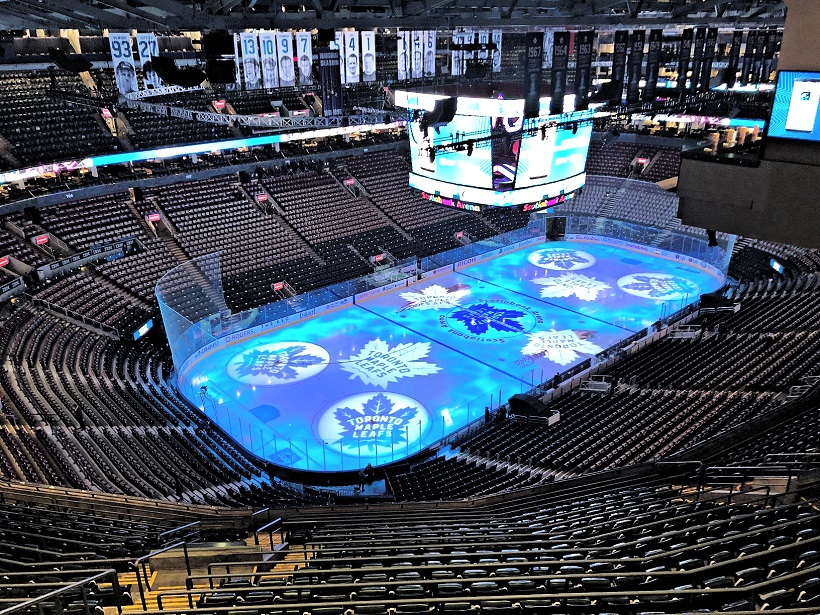
Using the example of the Toronto Maple Leafs, we’ll assume that Auston Matthews, who contracted COVID–19 in the initial wave last spring, has developed some form of immunity. But, such other key performers as Mitch Marner, John Tavares, William Nylander, Morgan Rielly, T.J. Brodie, Wayne Simmonds, Frederik Andersen and Jack Campbell have not, to our knowledge, been infected. What happens if a wave spreads through the Leafs dressing room, perhaps taking both goalies out of commission? What if Marner, Tavares, Nylander and Rielly need to isolate at the same time? The Leafs will suffer, incalculably, on the ice. Neither is this a wayward scenario, having already developed with the Dallas Stars and, to a lesser extent, the Columbus Blue Jackets. As mentioned, even if the participants are careful, it will be nearly impossible to prevent COVID–19 from impacting the 2021 NHL season. The “bubble” environment that ensured safety during the Stanley Cup tournament in the summer is not amenable over the span of 16½ weeks; 25½ weeks for the two clubs that compete for this year’s title. The hope, therefore, is that immunization will gradually take hold of players and staff throughout the season and playoffs. But, this cannot be accurately predicted.
The alternative, of course, is for the NHL to shut down until it’s safe to resume activity. This is where risk and reward collide, as they do when states and provinces re–open for survival of the economy. Achieving a reasonably safe balance is the objective, understanding that there will be casualties (in the example of hockey, we’re not talking deaths — we pray — but infections). There’s too much money at stake for owners and players to not give it a try, as with other professional sports.
It all begins Wednesday night.
Let’s keep our fingers and toes crossed.
ANDERSEN NOT SIDETRACKED BY NOISE: The Leafs’ No. 1 goalie said on Friday there has been “a little bit” of talk with the club about his contract situation. Probably, something like this — KYLE DUBAS: “Oh yeah, your deal expires at the end of this season.” FREDERIK ANDERSEN: “Yes, it does.” As I’ve written repeatedly, why would Dubas even consider a new contract for Andersen until he wins a playoff round? Or, until Jack Campbell proves, more clearly, whether he can play regularly in the NHL? That’s why I believe it’s imperative for coach Sheldon Keefe to deploy both goalies during the season. And, I’m not referring to Andersen starting 46 games; Campbell, 10. If Keefe pulls a Mike Babcock and leans solely on Andersen, it will harm the club. Obviously, performance — or lack, thereof — will dictate assignments, as always. If Campbell can’t stop a balloon when called upon, Andersen will rack up starts. It’s more likely, however, that Campbell will prove worthy of sharing the load during the next four months. Keefe has to provide him that opportunity.
SUPER BOWL LV PICK: Buffalo vs. Green Bay. If the Bills lose to Indy today, forget where you saw this.
NHL MEDIA GUIDES
From my collection of more than 1,000 such items, no–longer published.
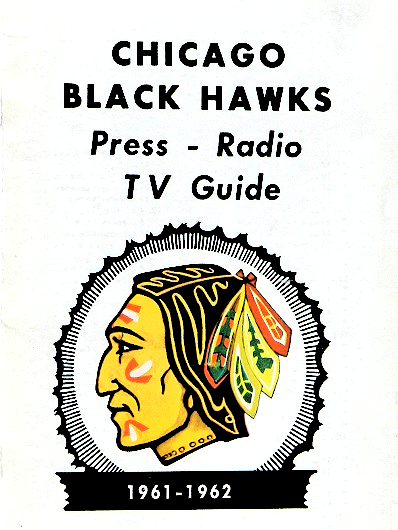
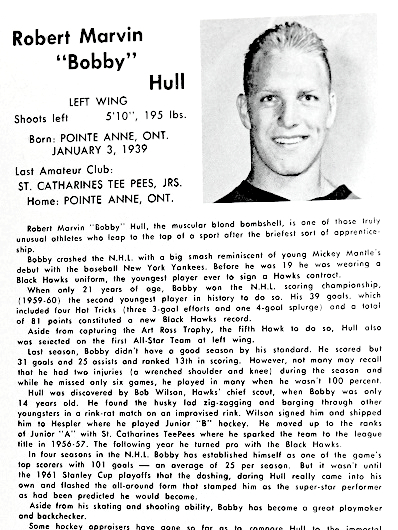
The Black Hawks were the defending Stanley Cup champion for this, among my oldest media guides. But, you’d never know it by the spartan cover. Bobby Hull was a 22–year–old superstar. In 1961–62, he would become the third player — after Maurice Richard and Bernie Geoffrion of Montreal — to score 50 goals.
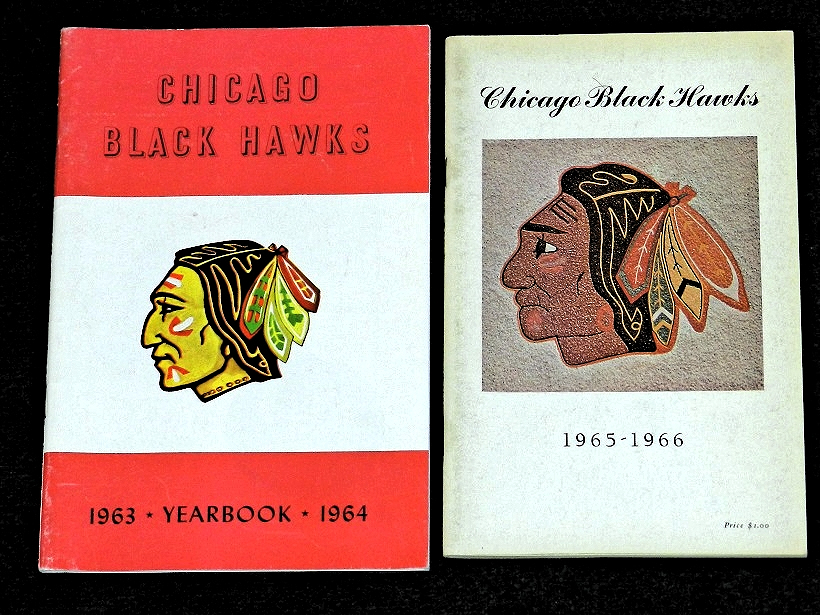
The talented Chicago teams of the mid–60’s. In 1963–64, the Black Hawks were up on Detroit, 3–2, in the Stanley Cup semifinals but lost, 7–2 and 4–2, getting eliminated on home ice. Detroit beat the Hawks again in the spring of 1966, overcoming a 2–1 series deficit in the semifinals to win three consecutive matches.
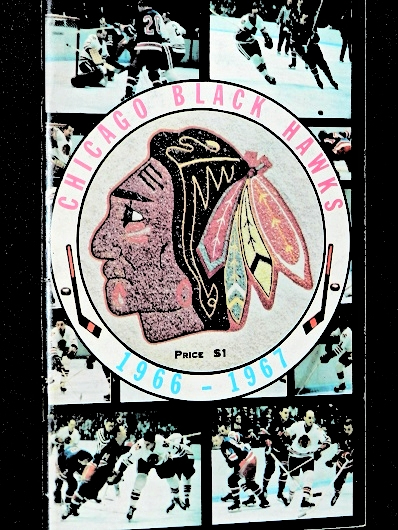
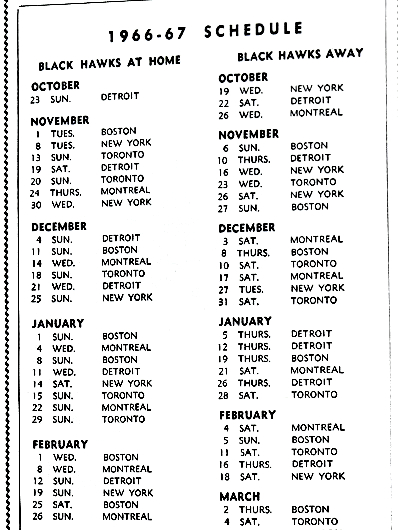
When the underachieving Black Hawks were upset by the Maple Leafs in six games during the 1967 semifinals — having finished atop the NHL, 19 points ahead of Toronto — big changes occurred. Included was the most lop–sided trade in league annals which sent Phil Esposito to the Boston Bruins.
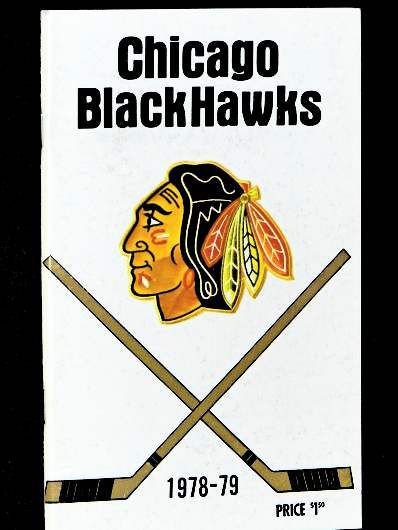
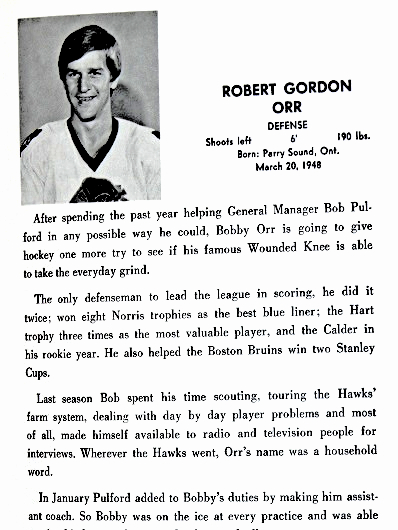
While in Boston, Bobby Orr twice won the Stanley Cup with Phil Esposito (1970 and 1972). Orr signed with Chicago as a free agent in 1976–77, but his crippled knees allowed him to appear in only 26 games with the Black Hawks over three seasons (missing all of 1977–78). This was Orr’s final media guide biography, in 1978–79. He retired in November of that season as, still, the greatest defenseman of all time.
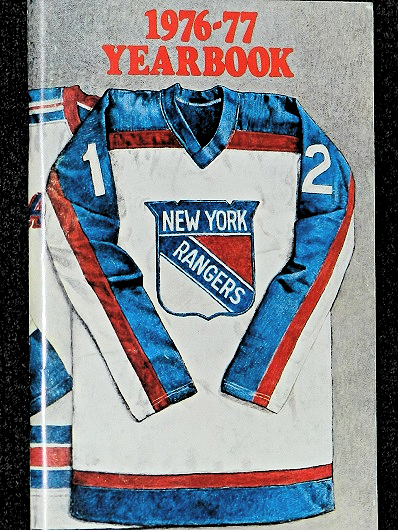
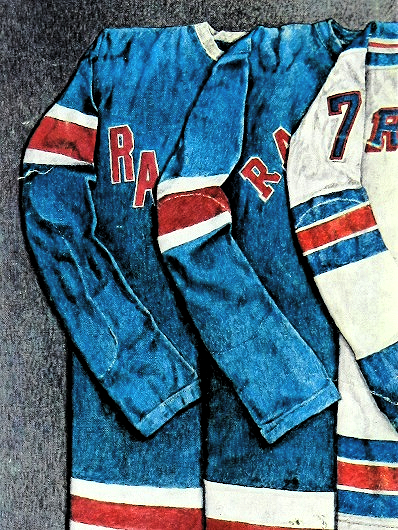
In 1976–77, under first–year general manager John Ferguson, the New York Rangers changed from their traditional uniform (right) to one with the club’s logo on the jersey. The move was unpopular from the outset and the Rangers switched back after two seasons, in which they finished last in the Patrick Division.
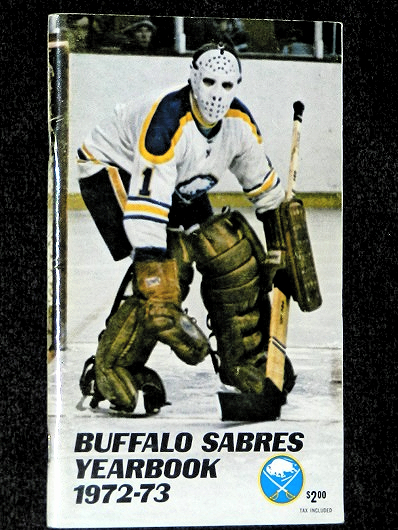
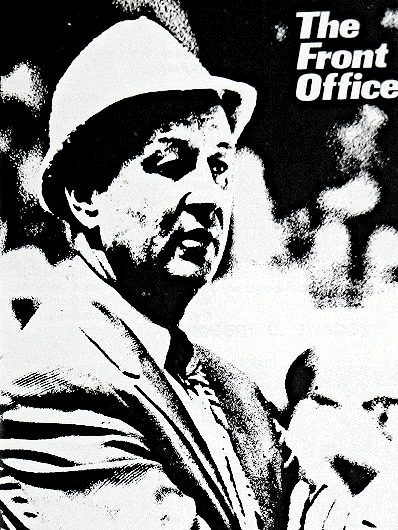
in only their third NHL season, the Buffalo Sabres made the Stanley Cup playoffs, defeating St. Louis, 3–1, on the final night of the schedule at the old Memorial Auditorium. Buffalo then fell to eventual Cup–champion Montreal in six competitive games. Veteran goalie Roger Crozier was on the front of the 1972–73 media guide. Former Maple Leafs GM/coach George (Punch) Imlach (right) had built the Sabres from scratch.
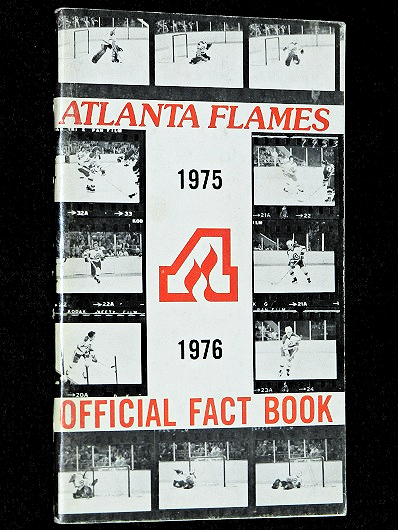
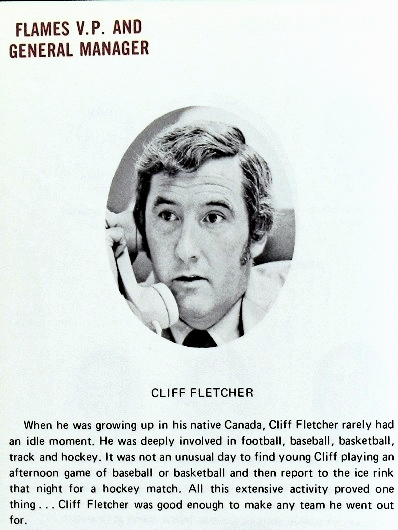
A young Cliff Fletcher was trying to get the Atlanta Flames over the hump in their fourth NHL season. But, the Flames were quickly eliminated by Los Angeles during the best–of–three preliminary round in 1976. The franchise would re–locate to Calgary for the 1980–81 season and win the Stanley Cup in 1989.
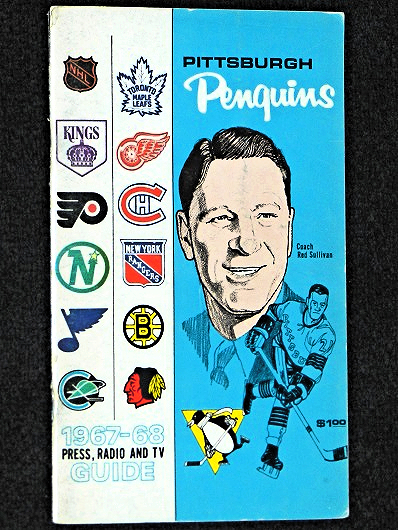
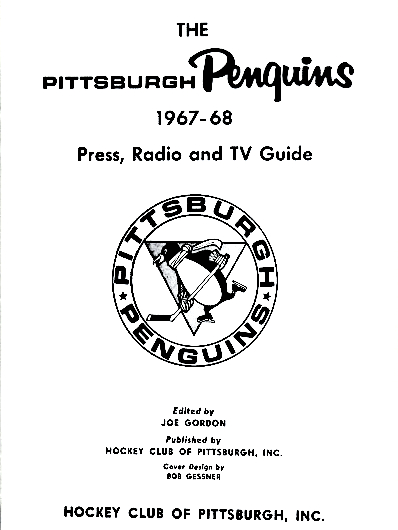
Coach George (Red) Sullivan and the 12 NHL logos graced the cover of the inaugural Pittsburgh Penguins media guide. The Penguins joined the league in the Great Expansion of 1967–68 along with the California Seals, Los Angeles Kings, Minnesota North Stars, Philadelphia Flyers and St. Louis Blues.
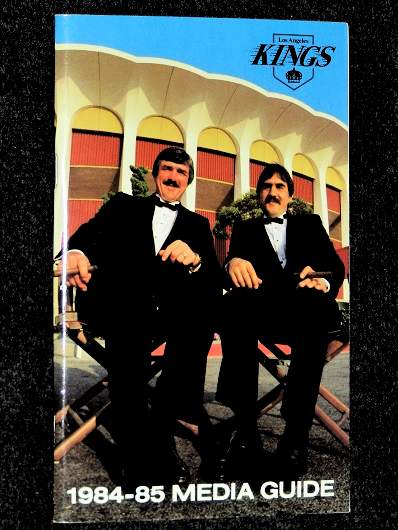
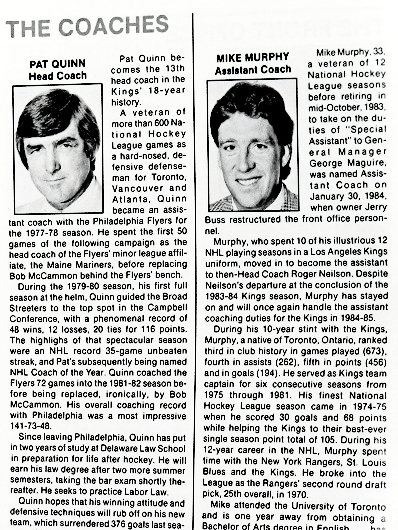
Pat Quinn and Rogie Vachon, sitting outside the Los Angeles Forum, were on the cover of the Kings media guide in 1984–85. Head coach Quinn and assistant, Mike Murphy, would later coach the Toronto Maple Leafs. The ’85 Kings were swept during a best–of–five by Edmonton in the first round of the playoffs.
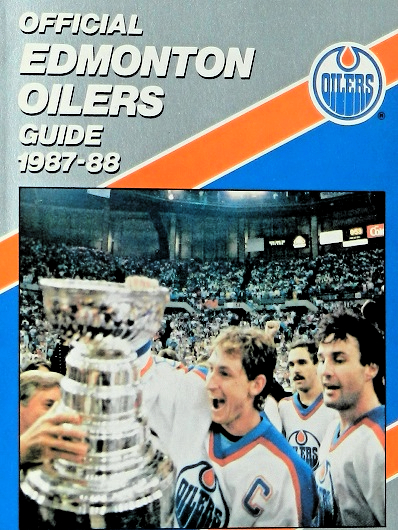

Who could have imagined that Wayne Gretzky, the world’s best hockey player, would — in 1987–88 — be in his final season with the Edmonton Oilers? After winning his fourth Stanley Cup, Gretzky was traded to the Los Angeles Kings on Aug. 9, 1988. A date that will not be forgotten by hockey fans in either city.
EMAIL: HOWARDLBERGER@GMAIL.COM

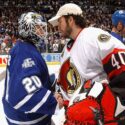





























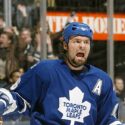
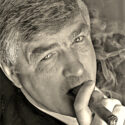
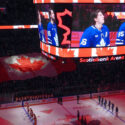

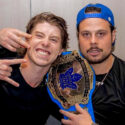
I agree with the idea of Keefe platooning Andersen and Campbell. Plus I’ve got a tip: If either of them go down, there’s a HHoF ringer named David Ayres available on short notice.